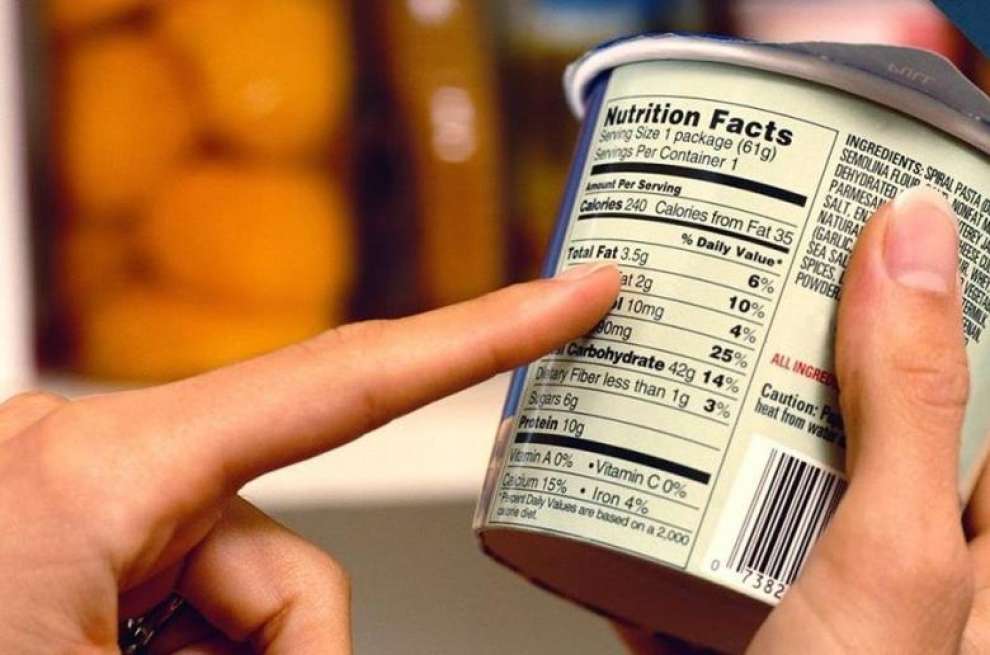Food Labels:
A Tool for Healthier Choices
Food labels provide more than just information; they are tools that help us make conscious and healthy choices for our diet. As the food market becomes more complex, understanding these labels is the first step in taking care of our health. Legislation requiring this information helps protect our health and promotes transparency regarding the products we consume.
Therefore, it is important to know what information food labels provide and to be able to use them as a ‘tool’ for proper information and product selection.
Mandatory Information on Labels
Food producers are required by law to provide the following information, which we as consumers can use to make more informed food choices:
Firstly, the name of the product alone can provide us with quite a bit of information about the food.
Name of the food product: The legal name is listed, if it exists—for example, when we see the name "fruit jam," it means the product contains a specific amount of fruit and meets certain specifications (Directive 2000/113..). If there is no legal name for the food, the common name of the food is used. The common name is the accepted name of the food by consumers, e.g., sheftalia. In all other cases, a descriptive name is given, such as “croissant with praline filling.”
In addition to the name, you can learn a lot about the product from the ingredient list:
Ingredient list: There are specific rules on how ingredients should be listed, and the way the ingredient list is written gives a lot of information about the product. For example, ingredients are listed in descending order of content, so the first ingredient is the one with the highest content. You can see all the ingredients as well as any additives. For instance, if the first ingredient in a product is sugar, it means sugar is the highest content in the product. The ingredient list is also linked to other important information, such as allergens and the content of certain ingredients.
Ingredients that may cause allergies or intolerances are highlighted in a different font (usually bold or capital letters). These are ingredients identified as potential allergens under current EU legislation which lists 14 allergens. Allergen ingredients are highlighted in bold or capital letters to ensure they can be quickly and easily recognized.
Quantity of certain ingredients or ingredient categories: This refers to the primary ingredient of the food or the one most associated with the product. The percentage of the ingredient is listed in parentheses next to the ingredient. So, for example, in a strawberry yogurt, you will see the percentage of strawberries or strawberry flavor listed next to the ingredient. If the percentage is very low, you can draw conclusions about the composition of the product (e.g., it is likely to be strawberry flavor if the percentage of the strawberry ingredient is very low).
In addition to these, the food label must also include the following details:
- Nutritional declaration: This includes information about calories, fats, carbohydrates, and proteins. This helps consumers compare products and choose those that best meet their needs, especially if they are monitoring their diet.
- Net quantity of the food: This information is usually listed in weight units (grams) or volume (milliliters), showing how much product is in the package.
- Minimum durability date (best before...) or use by date (use by). The first date relates to the product's quality, not its safety. The second date refers to the safety of the product and is applied to products that are prone to spoilage.
- Other mandatory information:
- Any special storage or usage conditions. For example, "Store in the refrigerator at 4°C to maintain freshness" or "Store in a dry, cool place."
- The name or commercial name and address of the responsible food business.
- Country of origin or place of provenance: The country of origin must be listed if it could mislead consumers. For example, if the main ingredient comes from another country than where it is produced, this must be stated. For instance, if a processed meat product is made in Cyprus but the meat comes from another country, the country of origin for the meat must be listed. Special provisions also apply to meats.
- Instructions for use: If necessary for the proper use of the product, such as instructions on how to cook or prepare the product for consumption.
- Alcohol content (for alcoholic drinks with more than 1.2% alcohol).
Other Information on Food Labels
In addition to the mandatory fields, food labels may include additional information, such as nutritional claims (e.g., high in protein, low in fat) or health claims (e.g., helps reduce cholesterol). It is important that any claims on the label must comply with the relevant legislation.
What About Non-Packaged Foods?
Foods that are sold unpackaged and therefore do not have labels with all the above information—such as in restaurants, fast-food places, bakeries, or pastry shops—must at least inform consumers about the 14 allergens contained in the food.
By carefully checking food labels, you can protect your health and make choices aligned to your nutritional needs. Knowledge is the first step toward a healthier diet!
Next time you shop for food, take a moment to read the label. That way, you will make more informed and healthier choices for yourself and your family!

Sources:
Regulation (EU) No 1169/2011 on the provision of food information to consumers.
EUFIC – Food Labels

 English
English
 Ελληνικά
Ελληνικά Русский
Русский
 Posted by
Food Safety Mum
Posted by
Food Safety Mum






